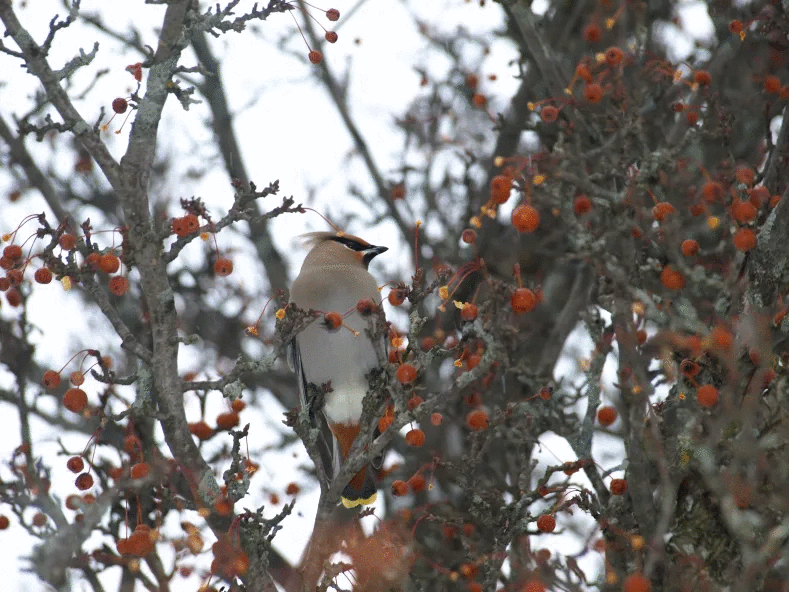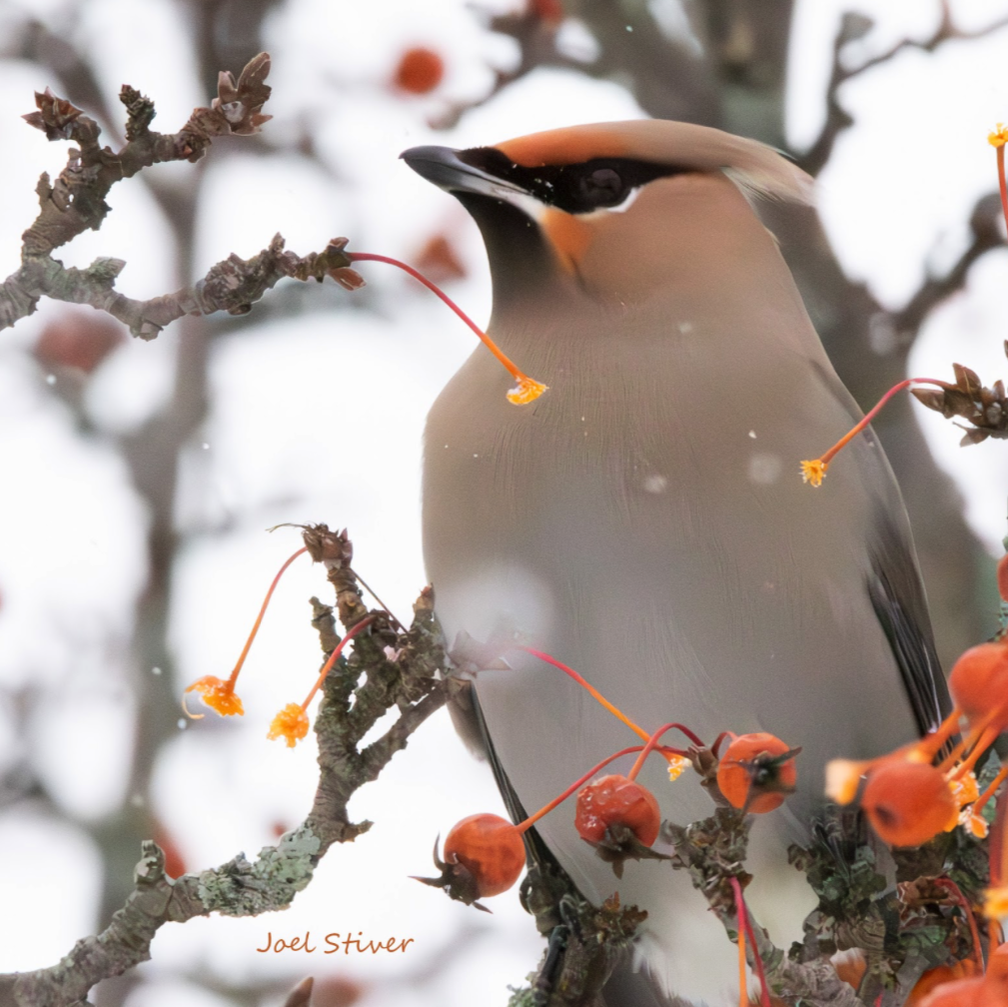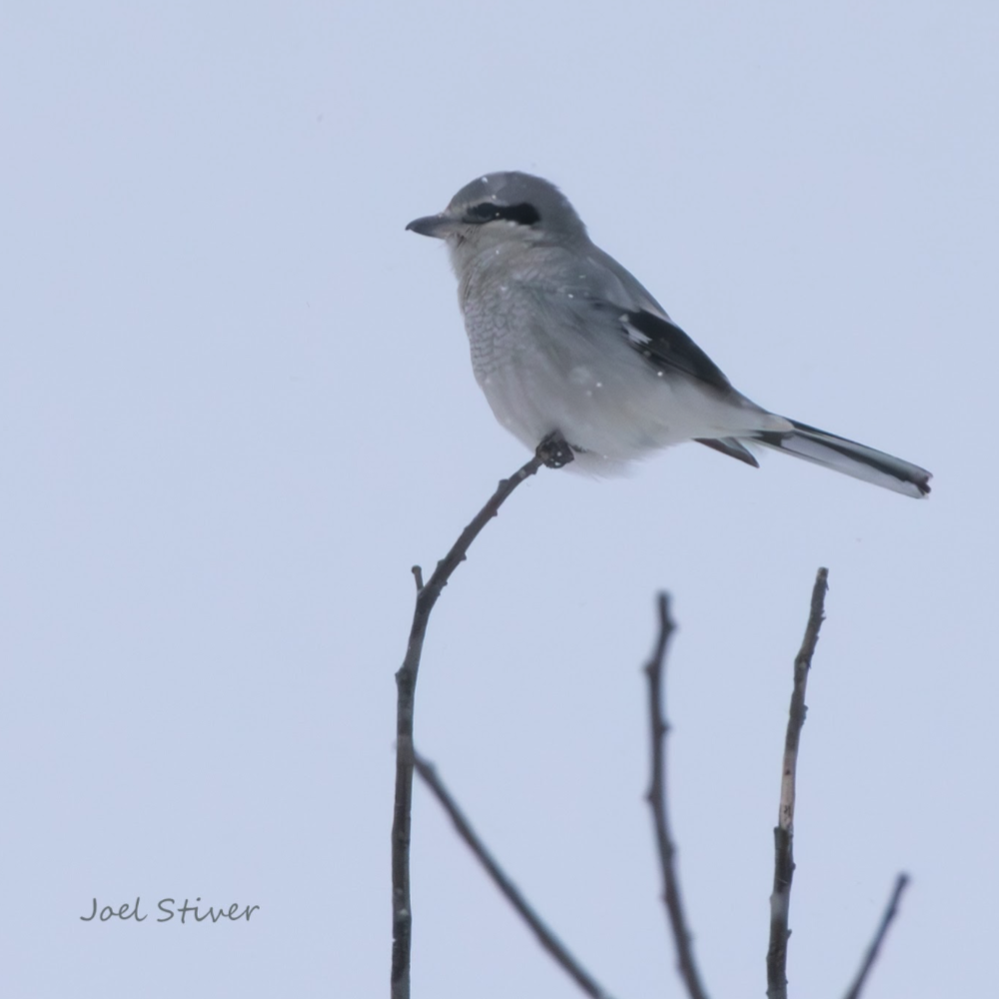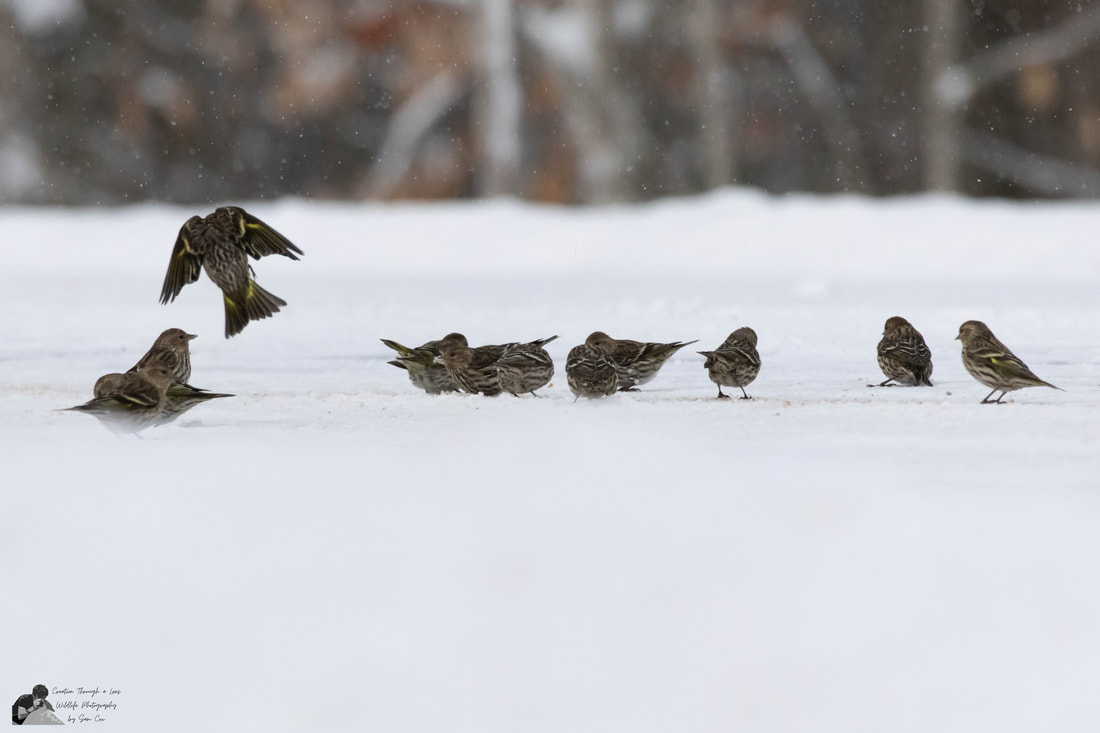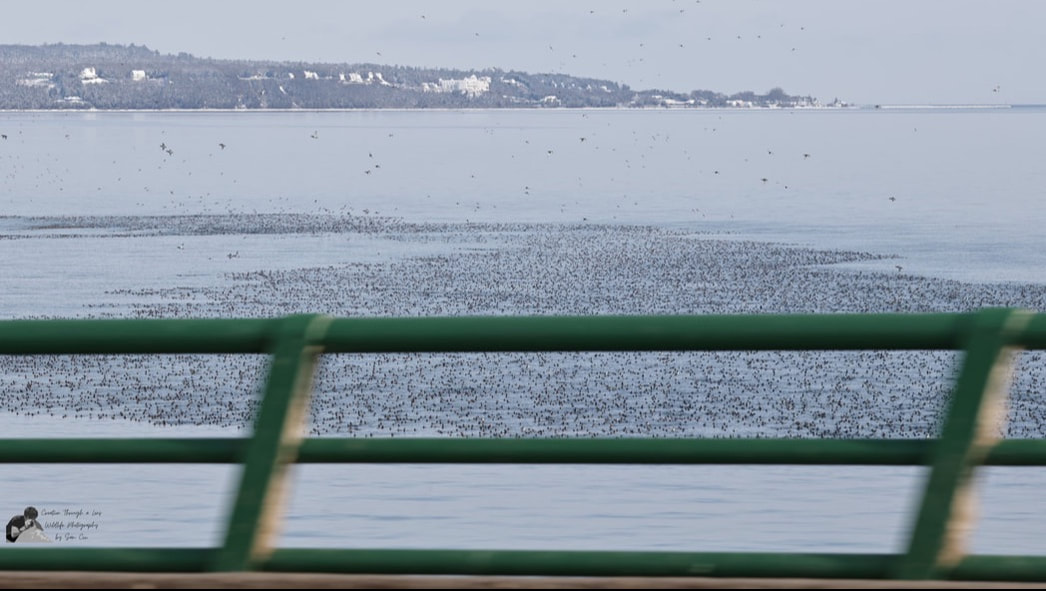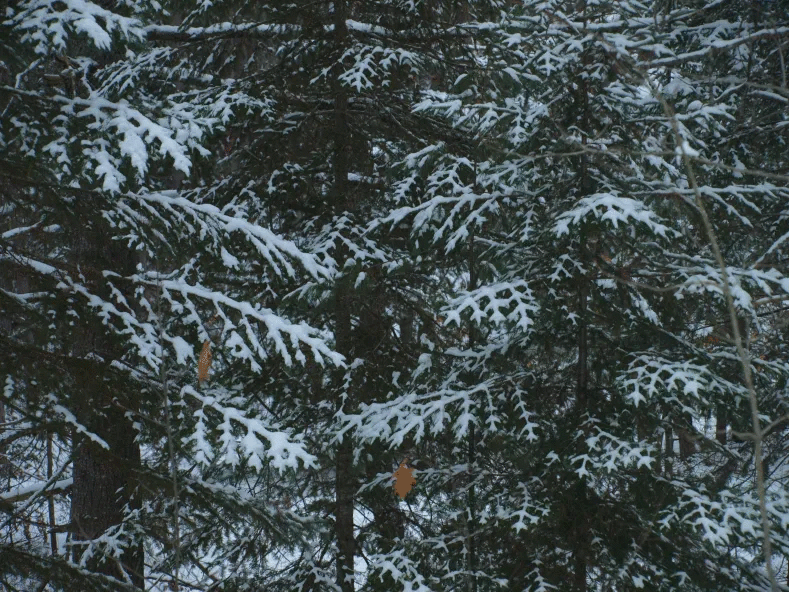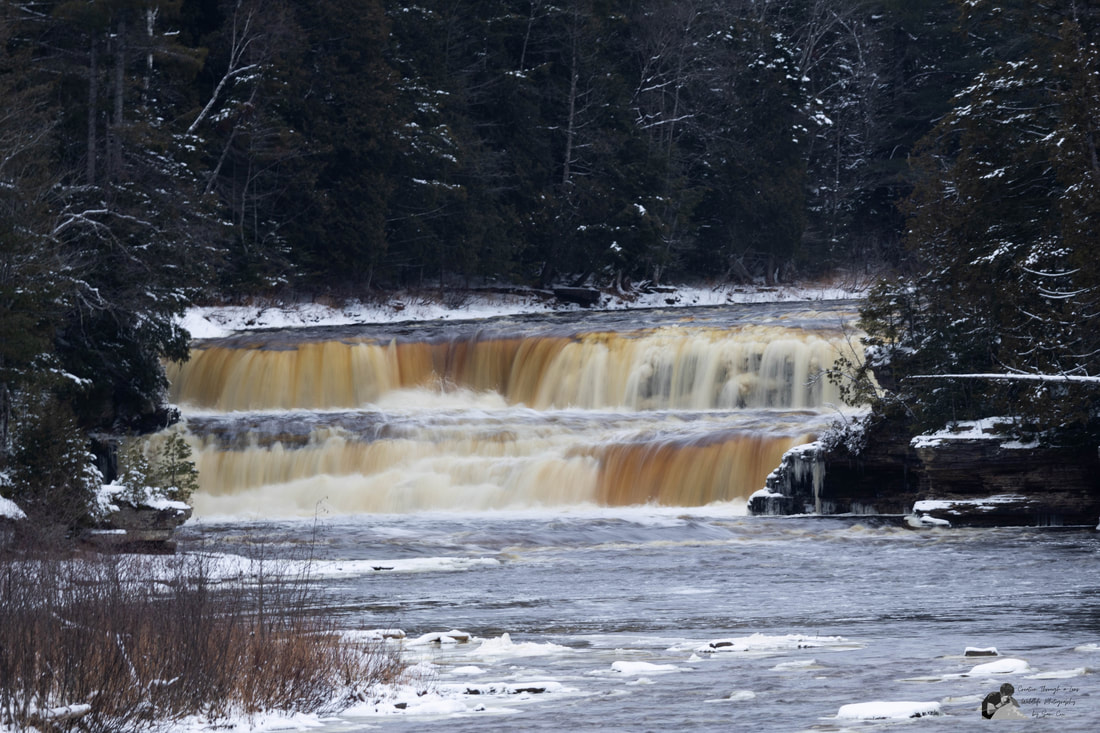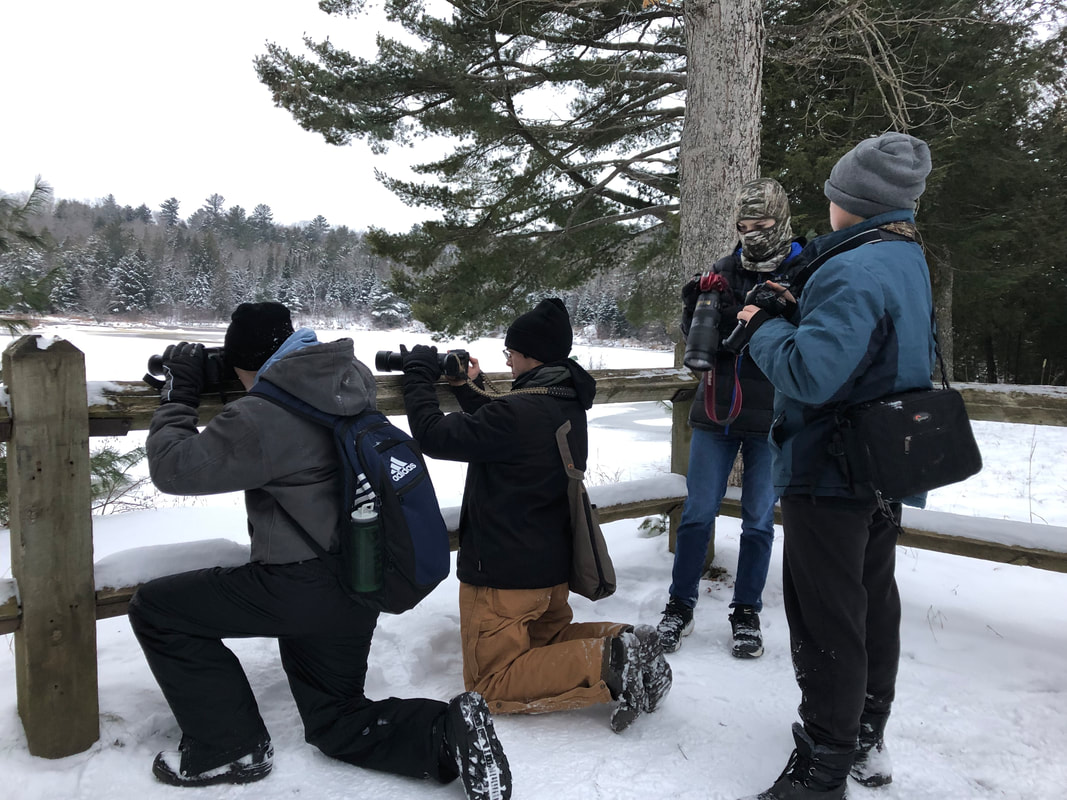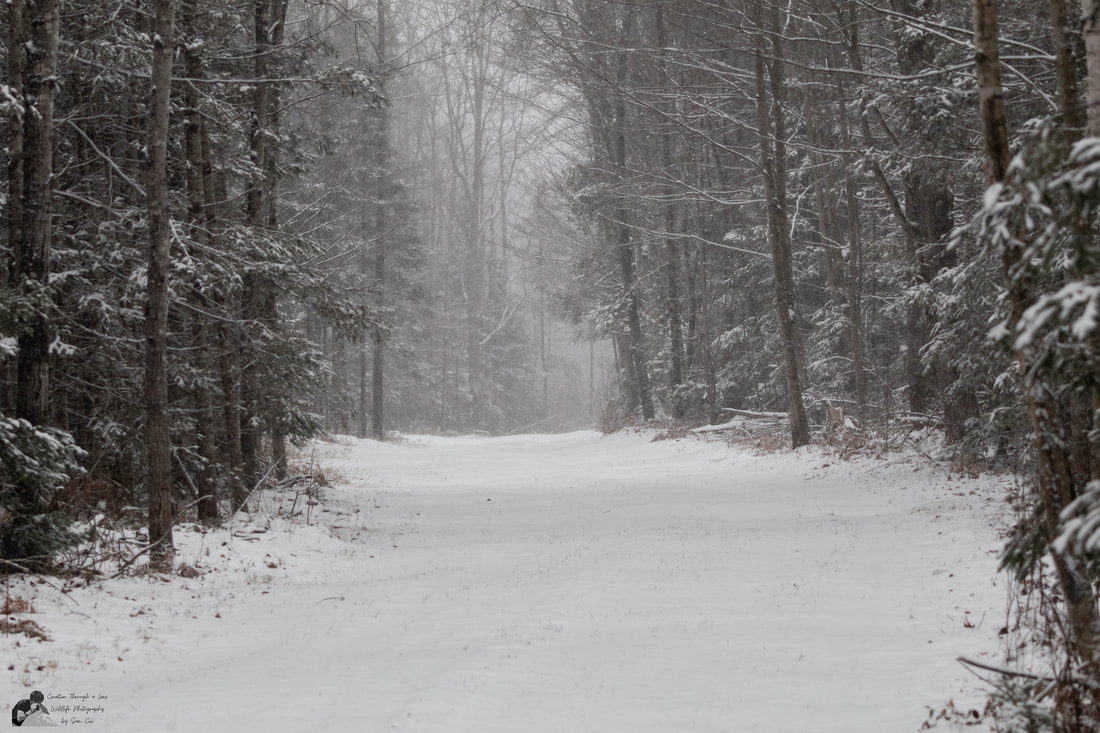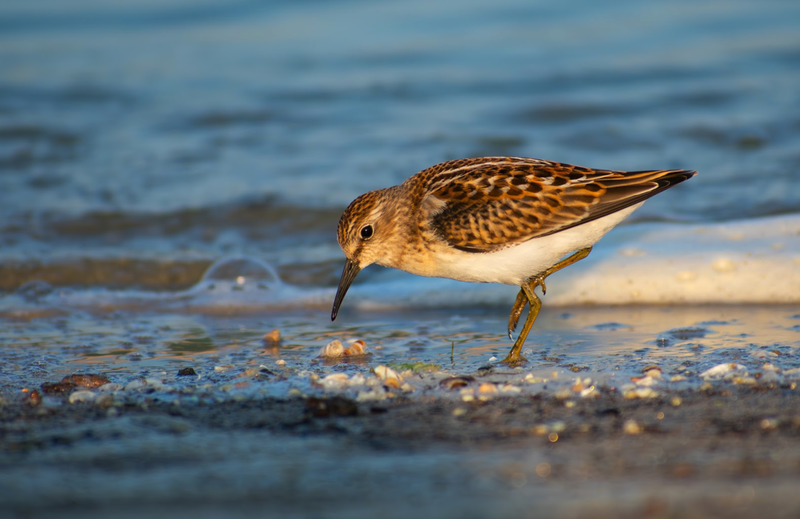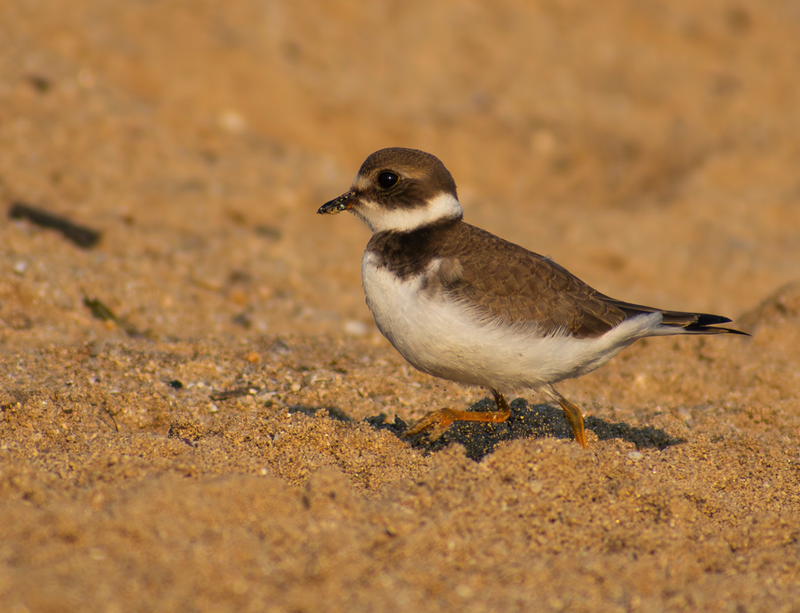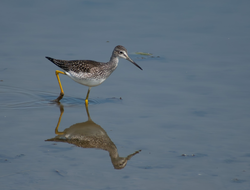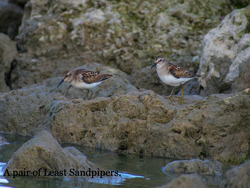Upcoming Events:
July 14th, 2024 - Field trip to Iron Horse Trail in Montpelier, OH. We will be assisting with generating ideas for interactive natural history signage for the park
Past Events
Upper Peninsula of Michigan - Birds of the North - January 2024
Report by Joel Stiver - Student Member
To begin the new year, the Northwest Tri-State Chapter of OYBC wearily ventured into their vehicles around 6:30 am to embark on a northern journey. Determined to meet some new feathered friends, they cautiously pushed through terrain unfamiliar to the group. A lengthy drive from the fields of Ohio, dawn light caught up with their arrival. Still wrapped up in their search for birds, eventually, their wishes were granted. A Red-breasted Nuthatch, Golden-crowned Kinglet, and Downy Woodpecker were all familiar yet welcome faces. On a journey for some new species, the crew continued their awaited travels. Other than meeting some new birds, the group also enjoyed the scenery and natural phenomena this winter wonderland had to offer. Continuously snowing, trees had some visitors make a home on their frozen branches. The white, unpolluted snow hanging from the pine trees made a gorgeous sight. A state full of bodies of water, half-frozen lakes, and rivers was also visually beautiful. On a hike through Tahquamenon Falls in Paradise, MI, the crew found their first feathered friends as well as some incredible landscapes. Darkness starting to descend upon the intrigued birders, they headed back to the car and made their way to one final destination for the night. Arriving at Whitefish Point at dark, the group made their way to the edge of Lake Superior. Once again, they found an incredible natural event where sand had frozen from the frigid temperatures and had turned into a solid-like ice formation. After they made their last discovery for the night, they made their way to their home for the weekend in Sault Saint Marie, MI.
|
After a rude awakening, they got ready and headed out the door by 7:00 am the following morning. On the way to the fields of Pickford, MI, they had hoped to see some grouse species and maybe even an owl. Determined to scout out a grouse lek, they came across an orderly flock of Snow Buntings that looked as if they were tumbleweed bouncing up and down along the road. Interested in learning the behaviors of different bird species, the group discovered Snow Buntings actually fly in organized formations and have a hierarchical status within each flock. Males rank highest in dominance, getting better feeding opportunities than other flock members. Continuing their search, eventually, they came
|
across a grouse lek… not just any lek but a group of 22 individuals! In comparison, the average lek contains 8-12 grouse. The majority of the group spotted consisted of Sharp-tailed Grouse, but a couple of Ruffed Grouse were mixed in as well. It was an awesome morning sighting; these ended up being new birds for all the students attending. Progressing with the journey, they saw multiple Common Ravens, Wild Turkeys, and American Crows along the fields. Heading back to an area around the Sault, they came across an area of thorny shrubland. In that region, one of the crew’s most anticipated birds was found: the Northern Shrike. An unexpected sighting, considering the group was passing by a random farm, made for an exuberated group of birders! Slowly pointing their cameras and binoculars toward the bird, the avid crew got some great looks and a handful of shots. A classic, distinct behavior of the Northern Shrike, they’re known for vigilantly watching over their territory and bobbing their tail up and down. This was the group’s way of quickly identifying this observant bird.
Continuing to move closer to the Sault, the Ohio crew came across Rotary Island Park. This wonderful park offered a bit of both worlds, being alongside the water and producing a plentiful amount of fruit trees. This is where the group found a variety of waterfowl, such as Common Goldeneyes and Common Mergansers. Then, once again, a surprise target bird made an appearance: the Bohemian Waxwing. Bedazzled by the subject’s beauty, this bird made for great photography opportunities. Most waxwings are found in flocks in the hundreds, whereas the waxwing observed was alone and sedentary. It seemed tired and desperate, staying in one spot while feeding on the tree’s berries. After observing this beauty for a long while, the group located a flock of Bohemian Waxwings nearby. Still uncertain, it was likely the close flock was this individual’s group of friends. Spending a decent amount of time with this new bird, the group of rewarded birders began to wrap up their day of adventures. Lastly, before heading to their temporary home, they made a few quick visits to some local gift shops and a lock for boats and other watercraft passing through. Arriving at the Airbnb, the tired travelers took a rest for a bit before going out to dinner. Finally going to sleep for the night, they planned to head out for another birding adventure at 7:00 am once again.
Setting out for the final day, they ventured back to Paradise, MI, in search of some winter finches. Driving alongside the road slowly, they made a pitstop where dozens of Pine Siskins had congregated to feed. After this short visit, the crew moved on through some pine forests and shrubs. On this journey, they came across flocks in the hundreds of Bohemian Waxwings. With incredible aggregations, the waxwings participated together in preening, foraging, and vocalizing. Their calls are high-pitched, and soft trills are often emitted when moving in these large numbers.
Setting out for the final day, they ventured back to Paradise, MI, in search of some winter finches. Driving alongside the road slowly, they made a pitstop where dozens of Pine Siskins had congregated to feed. After this short visit, the crew moved on through some pine forests and shrubs. On this journey, they came across flocks in the hundreds of Bohemian Waxwings. With incredible aggregations, the waxwings participated together in preening, foraging, and vocalizing. Their calls are high-pitched, and soft trills are often emitted when moving in these large numbers.
|
Planning to head home to the fields of northwestern Ohio quite soon, they began to make their way to another pine forest with plentiful Pine Siskins and Purple Finches. Checking the area out, it did not disappoint and lived up to its promise. The group got excellent looks at the puffy Purple Finches and energetic Pine Siskins. Now ready to make their way south, the crew hopped in the car and headed for the Mackinac Bridge. Beginning to journey across the remarkable structure, the attentive birders found a familiar sighting from the start of their travels. They located a massive migratory flock of about 25,000 waterfowl.
|
An extraordinary and unusual amount of migrating birds, this was definitely a notable observation. The majority of the species consisted of Redheads, as well as a few confirmed American Coots and Common Goldeneyes. The amazed birders even got a look at the waterfowl’s flight patterns as if they were forming a rainbow of birds. It turns out that this was actually an ongoing investigation led by none other than the Audubon Society. A count was set in place, and identification was an essential part of the process.
Finishing their adventures in the upper peninsula of Michigan, the crew had memorable, unforgettable sightings and life birds that gave the students an authentic northern experience. Although they weren’t able to find an elusive owl, the species found did not disappoint. Growing in their knowledge and acquaintances with one another, the students grew in their fascination with the natural world as a group.
Finishing their adventures in the upper peninsula of Michigan, the crew had memorable, unforgettable sightings and life birds that gave the students an authentic northern experience. Although they weren’t able to find an elusive owl, the species found did not disappoint. Growing in their knowledge and acquaintances with one another, the students grew in their fascination with the natural world as a group.
Detroit Hawk Watch Trip - September 16, 2023
Report by David Kline-Parker
|
On Saturday, September 16th, the NW Tri-State Chapter of Ohio Young Birders Club went to Lake Erie Metropark for the Detroit Hawk Watch. Mrs. McCaskey, one of our advisors, drove Sam Cox and I, who are both members. Joel, another member, rode with Cherie Yarger the other advisor, and her husband, Mr. Yarger, who are Joel’s aunt and uncle. Ethan Walz, the last member, could not make it because he had a cross country meet. Afterwards we went to the Detroit International Wildlife Refuge. I got two birds to add to the list of birds I had never seen before: a Black-Crowned Night Heron and a Broad-Winged Hawk.
|
|
At the hawk watch we went down to the Detroit River. We met one of Mrs. McCaskey’s friends. His name is Mark Hainen. He is one of the volunteer hawk counters. While we were there, Mark helped Joel with settings on his camera so it would take better pictures. It worked! We also met Mr. Buster and three of his OYBC students from OYBC NE, which was nice. While at the river we saw three kettles of hawks, which is a big group of hawks. Two of the kettles were Sharp-Shinned Hawks, and one was Broad-Winged Hawks. Joel, Sam, and I went for a walk on a boardwalk they have there. We saw Great Egrets, Mute Swans, lots of Mallard Ducks, Canada Geese, Gulls, and Terns.
At the International Wildlife Refuge we took a path down by a river. There were lots of Cormorants. It was a rookery. Sam got pooped on. Mrs McCaskey said that was good luck. Then we saw the Black-Crowned Night Herons. There were two of them.
We had a lot of fun at the Hawk Watch. We were all happy that we got to see the Herons. Joel, Mrs. McCaskey, and I agreed that the heron was our favorite part. We all thought it was a good experience. All the bird pictures were taken by Sam Cox. Mr Yarger took our group photos at the river. Mrs. McCaskey took them at our pictures at our other stops.
At the International Wildlife Refuge we took a path down by a river. There were lots of Cormorants. It was a rookery. Sam got pooped on. Mrs McCaskey said that was good luck. Then we saw the Black-Crowned Night Herons. There were two of them.
We had a lot of fun at the Hawk Watch. We were all happy that we got to see the Herons. Joel, Mrs. McCaskey, and I agreed that the heron was our favorite part. We all thought it was a good experience. All the bird pictures were taken by Sam Cox. Mr Yarger took our group photos at the river. Mrs. McCaskey took them at our pictures at our other stops.
Shorebird Photography Workshop - August 19, 2023
Report by Joel Stiver
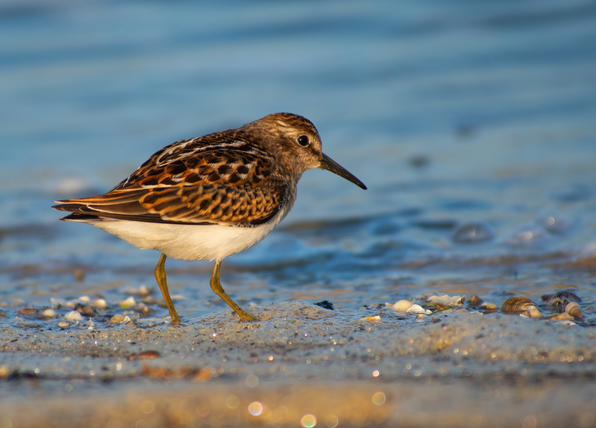 Least Sandpiper by Joel Stiver
Least Sandpiper by Joel Stiver
On August 19, 2023 a group of young birders from various regions in Ohio set out to the Lake Erie regions in search of shorebirds. The group of young people was led by Sabrewing Nature Tours guides and professional photographers, Brian Zwiebel and Jamie Cunningham. Every year around late June, shorebird migration officially begins. This calls for birders around the world to venture to areas potentially appealing to different shorebirds such as sandpipers, knots, dowitchers, stilts, and many others. Some shorebirds are even known to migrate year-round covering such far distances, only being able to lay a brood and watch their young fledge then find their way back into migration. Lake Erie is a major stop for a variety of migrating species, being a point in between their breeding grounds on the Arctic tundra and their wintering regions in Central and South America. The group explored Maumee Bay beaches for various species migrating through at the time. It ended up a successful trip, with multiple shorebirds such as the Least Sandpiper, Semipalmated Sandpiper, Lesser Yellowlegs, Sanderling, Semipalmated Plover, and non-shorebirds such as the Least Tern, Great Blue Heron, and a few Osprey. Although the shorebird species were beautiful and captivating, the main point of this trip was actually photography. Shorebird photography takes a unique perspective to really dive into their world. The tour guides taught the young birders group how to properly photograph shorebirds and the different ways to do it. Part of the experience was getting wet and sandy… calling for towels and junky clothes. Laying on the ground to be on their eye level is the ideal way to photograph shorebirds, giving you the best possible image in that scenario. Although, being on their eye level is not just for the simple purpose of taking gorgeous photographs, but to really see and study the behavior of a shorebird. Watching a Least Sandpiper dig up small invertebrates along beaches is truly phenomenal, or being in the presence of a scurrying plover in the sand shows their skeptical personality. Seeing the world how they do, really teaches a person more about a shorebird’s view on life. The group also learned more about ideal lighting and time of day for shorebird photography. To be a shorebird photographer is to be an early riser, often needing to be at the beach by sunrise to ensure the best lighting possible in a shorebird photo. The plumage on a shorebird can often shine as golden in the early morning and late evening, being a gorgeous time for photography. The later in the day, the more harsh the light is. Silhouettes can also make shorebird photos more interesting, depending on the composition.
Shorebird composition can also determine someone’s satisfaction with their photo. In the early morning, shorebirds can be photographed in almost any setting, a beach, wetland, swamp, lake, and many more areas. As the day gets later, ideal habitats to photograph shorebirds are in more shaded areas with vegetation or possibly in fields. The light gets harsher as the day goes on, making shaded areas with a green or a vivid color background better for photography. The positioning of a shorebird also impacts the whole photo. The guides explained that where the eye is looking, is the area that should have more space. The bird should be on one of the sides with available space in the direction it’s looking. In a photograph, its emphasis should never be in the middle. Overall, this makes the photo more interesting. Using the tips given, the young birders took the advice and began to practice their new photography knowledge on the shorebirds viewed.
Enjoying the day, the young birders also grew in their knowledge of shorebirds. Some of the species were new to the group, learning and observing their behaviors and habitats for future reference. This attached some of the group members to shorebirds and the photography that can be done with them, drawing attention to potential future trips dedicated to these fascinating birds. Finishing up the day, the group headed into the lodge resort for lunch and more photography tips. Each student presented a few of their photos to be critiqued by the guides, allowing the students to be informed of how to improve their photography with the tips they learned during the shorebird workshop that day. In conclusion, it was a great day of education and fun for both the students and guides.
Shorebird composition can also determine someone’s satisfaction with their photo. In the early morning, shorebirds can be photographed in almost any setting, a beach, wetland, swamp, lake, and many more areas. As the day gets later, ideal habitats to photograph shorebirds are in more shaded areas with vegetation or possibly in fields. The light gets harsher as the day goes on, making shaded areas with a green or a vivid color background better for photography. The positioning of a shorebird also impacts the whole photo. The guides explained that where the eye is looking, is the area that should have more space. The bird should be on one of the sides with available space in the direction it’s looking. In a photograph, its emphasis should never be in the middle. Overall, this makes the photo more interesting. Using the tips given, the young birders took the advice and began to practice their new photography knowledge on the shorebirds viewed.
Enjoying the day, the young birders also grew in their knowledge of shorebirds. Some of the species were new to the group, learning and observing their behaviors and habitats for future reference. This attached some of the group members to shorebirds and the photography that can be done with them, drawing attention to potential future trips dedicated to these fascinating birds. Finishing up the day, the group headed into the lodge resort for lunch and more photography tips. Each student presented a few of their photos to be critiqued by the guides, allowing the students to be informed of how to improve their photography with the tips they learned during the shorebird workshop that day. In conclusion, it was a great day of education and fun for both the students and guides.


